10 Books Every Head of Development Needs To Read
Grace Warren
4 min read • 12 November 2019
…and why you should take the time to actually read them.
We have compiled a list of 10 must-read books for every Head of Development. Our recommendations contain examples of plans, proven insights and guidance to help you be remarkable. Each of these books has a unique approach or technique that you can tailor to your needs.
1.’Act Like a Leader, Think Like a Leader’ By Herminia Ibarra
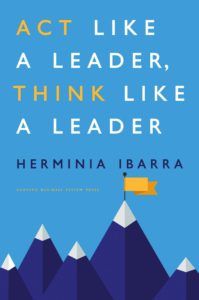
Herminia Ibarra draws on her own experience as a professor of leadership writing in a ‘how-to’ style, using useful models, worksheets and engaging examples with helpful summaries. This book gives practical advice for managers and executives by delivering insights to position themselves for leadership and create an impact on their business. Ibarra breaks down her ideas into 3 key sources: Redefining your job to make strategic contributions, diversifying your network and becoming more playful with your self-concept. She basis her thesis on “becoming a leader, from the outside in” as she believes people become leaders by doing leadership work.
Act like a Leader, Think Like a Leader by Herminia Ibarra
2. 'Made to Stick' by Chip and Dan Heath
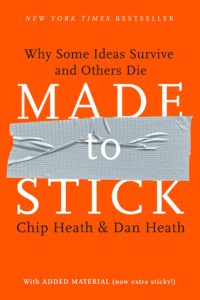
This was the first of three books by Chip and Dan Heath centred around finding the six traits that make an idea stick in our brains, so you don’t just know why you remember some things better than others, but you can also spread your ideas more easily among the right people. This book outlines the most important characteristics of ‘stickiness’; what makes an idea ‘stick’ in the mind and how to make it work for you. Perfect for speaking, marketing, anytime you need to make people listen, believe and act.
Made to Stick by Chip and Dan Heath
3. ‘Primal Leadership’ by Daniel Galeman, Richard Boyatzis and Annie Mckee
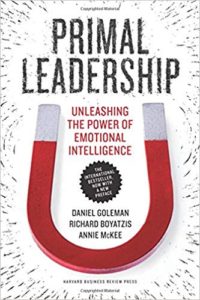
Primal Leadership explains the emotional intelligence competencies and leadership styles exploring how to use them to create a positive emotional climate that fosters: creativity, innovation, strong teams and great performance. Galeman, Boyatzis and Mckee explore the key concepts of why emotional intelligence is powerful, how to develop resonant leaders and how to build emotionally intelligent organisations.
Primal Leadership by Daniel Galeman, Richard Boyatzis and Annie Mckee
4. ‘Reach: How to Build Confidence and Step Outside Your Comfort Zone’ by Andy Molinsky

In Reach, Andy Molinsky breaks down the five key challenges of our avoidance tendencies and illuminates the path towards enjoying what you once feared. In this book, he recommends people to act outside their personal and cultural comfort zones to reach their full potential both personally and professionally. He expresses 3 resources you can use to help build confidence and rise to the challenge: conviction, customisation and clarity.
5. 'The Managers Path’ by Camille Fournier
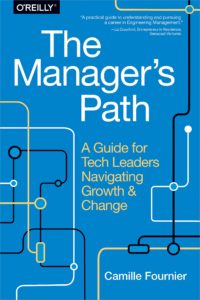
The actionable advice in this book takes you through the stages of technical management and ways in which to approach various obstacles in your path. Through reading this, you can learn how to become a better manager and leader in your organisation as it covers items such as; understanding how to build and bootstrap a unifying culture in teams, dealing with people problems and learning how to manage yourself: avoiding common pitfalls that challenge many leaders.
The Manager's Path by Camille Fournier
6. ‘Peopleware: Productive Projects and Teams’ by Tom DeMarco and Tim Lister
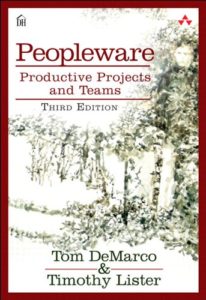
Peopleware provides and an in-depth look at common mistakes project managers make and offers concrete insight on the ways to correct them. From the knowledge in this book, you can transform your development team into the productivity powerhouse that they are waiting to be. Some of the key ideas that are explored are; many creative projects fail because managers have adopted the wrong management style, the workplace has the highest effect on performance so make the space a pleasure to work in and sacrificing quality for speed will make your employees less productive.
Peopleware by Tom DeMarco and Tim Lister
7. ‘High output management’ by Andrew S.Grove

Grove reveals why effective management is the critical component of entrepreneurship and how it is essential not just for building a start-up, but also sustaining it. He explains that all executives and managers must consider the following 3 components: time, quality and cost. One of the main ideas from the book is; if you’re motivated to become a better manager- and improve the output of your organisation-then there is nothing more important than training yourself. This is a highly effective framework for setting, measuring and tracking goals in an organisation.
High Output Management by Andrew S. Grove
8. ‘The Pragmatic Programmer’ by Andy Hunt and Dave Thomas
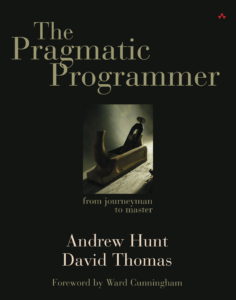
The Pragmatic Programmer cuts through the increasing specialisation and technicalities of modern software development to examine the core process. It includes topics ranging from personal responsibility and career development to architectural techniques for keeping code flexible and easy to adapt. This book is designed for people looking to save time and learn key concepts in software engineering.
The Pragmatic Programmer by Andy Hunt and Dave Thomas
9. ‘Code Craft’ by Pete Goodliffe
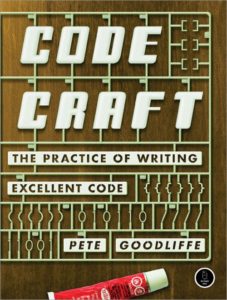
This clear, practical and entertaining guide teaches programmers how to move beyond writing code to writing great code. It covers code-writing concerns such as presentation style, variable naming, error handling and security. Goodliffe suggests that not all programmers know how to craft great code-code that is well written and easy to understand and gets you started by giving you the ideas to consider and base your thoughts on.
10.‘The Cathedral & the Bazaar’ by Eric S. Raymond, Bob Young
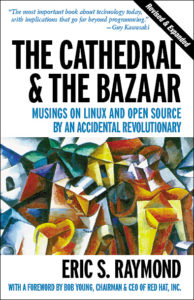
One of the most ground-breaking papers about the open-source/free software world, Raymond’s writing is clear and effective. This is the ideal read for anyone who cares about the future of the computer industry or the dynamics of the information economy. This book describes two 'modes' or 'metaphors' for software development, the old ‘Cathedral' focusing on slow-release iterations and then the new ‘Bazaar’ in which rapid development around a core team of developers is favoured. According to Bob Young, "This is Eric Raymond's great contribution to the success of the open-source revolution, to the adoption of Linux-based operating systems, and to the success of open source users and the companies that supply them.”
The Cathedral and The Bazaar by Eric S. Raymond and Bob Young
Bonus book!
The CIO’s Guide to Mobile Apps

Our bonus book this month is The CIO’s Guide to Mobile Apps, our free to download eBook.
In this eBook, we explore 5 essential pillars to create a best in class mobile app. The insights within this eBook are based on our previous work and experience with companies such as Heathrow Airport, P&O Ferries and Confused.com. We combine insights and best practices gathered from thought leadership, expert interviews and our work with clients to summarise what makes an outstanding mobile app.
Click here to download for free!
Keep an eye out for more posts like this and #Dootrixbookclub on our social channels for updates and for you to tell us your recommendations.
Grace Warren


